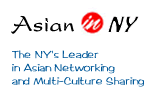nomadic peoples in competition for land, and in the south against the Chinese, whose high culture and fertile lands were always attractive to the Mongols. China responded with punitive expeditions, which pushed these pre- and proto-Mongol peoples farther north, west, and east and resulted in periods of Chinese hegemony over parts of Inner Asia. The Mongols of Chinggis Khan emerged in central Mongolia in the twelfth century under Chinggis’s grandfather. Tribal alliances, wars, clan confederations, and more wars contributed to a new Mongol unity and organization and the eventual conquest of lands throughout Eurasia.
The high point of Mongol achievements was followed by gradual fragmentation. The Mongol successes throughout the first half of the thirteenth century were eroded by overextension of lines of control from the capital, first at Karakorum and later at Daidu. By the late fourteenth century, only local vestiges of Mongol glory persisted in parts of Asia. The main core of the Mongolian population in China retreated to the old homeland, where their governing system devolved into a quasi-feudalistic system fraught with disunity and conflict. Caught between the emergence of tsarist Russia and the Manchus–distant cousins of the Mongols– in the seventeenth century, Mongolia eventually was absorbed into the periphery of the Chinese polity, where it remained until 1911. As the Chinese imperial system disintegrated, the Mongols sought national independence but the Chinese did not willingly give up, and Mongolia continued to be divided into northern and southern sections. Russian interest in Mongolia was replaced by Soviet involvement, and the Japanese sought political leverage and applied periodic pressure up through World War II.
Throughout the twentieth century, Russian and Soviet influence over Mongolia has been a predominant factor in its national development. The tsarist government aided Mongolian revolutionaries both diplomatically and militarily against the Chinese, and anti-Bolshevik White Russian military forces did active battle against both the Chinese and the indigenous revolutionaries. The theocratic monarchy established after 1911 was greatly limited by the Mongolian Revolution of 1921 and eventually replaced by a “people’s republic” under heavy Soviet influence. This influence continued throughout the twentieth century in the form of political guidance and economic aid. Severe purges of monarchists, Buddhists, conservative revolutionaries, and any other real or perceived opponent of the new communist regime took place throughout the 1920s and early 1930s. Extremism bordered on national disaster before evolving into more moderate policies of a new Mongolian socialism characterized by closely planned economic growth. Joint Mongolian-Soviet armies successfully fended off Japanese military advances in 1939. The rest of World War II produced further agricultural and industrial development in support of Moscow’s war efforts and made Mongolia a critical buffer in the Soviet Far Eastern defense system. Technically neutral, Mongolia declared war against Japan only in August 1945.
Peacetime brought additional Soviet and East European economic aid (and eventually membership in the Council for Mutual Economic Assistance [Comecon]) and a new relationship with the People’s Republic of China after its establishment in 1949. Mongolian-Chinese relations resulted in still more economic assistance to and trade with Ulaanbaatar. Mongolia’s external policies, however, were founded on those of the Soviet Union, and relations with China, always influenced by suspicions over real or imaginary claims by China to “lost territories,” faltered in the wake of the Sino-Soviet rift that developed in the late 1950s. By the late 1960s, Mongolia had become an armed camp, as Soviet and Chinese troops were poised against one another along the Sino-Mongolian border. Tensions between Ulaanbaatar and Beijing lessened only when Sino-Soviet rapprochement began to evolve in the mid-1980s. The issue of Soviet troop withdrawal from Mongolia still constrained Sino- Mongolian relations in the late 1980s.





